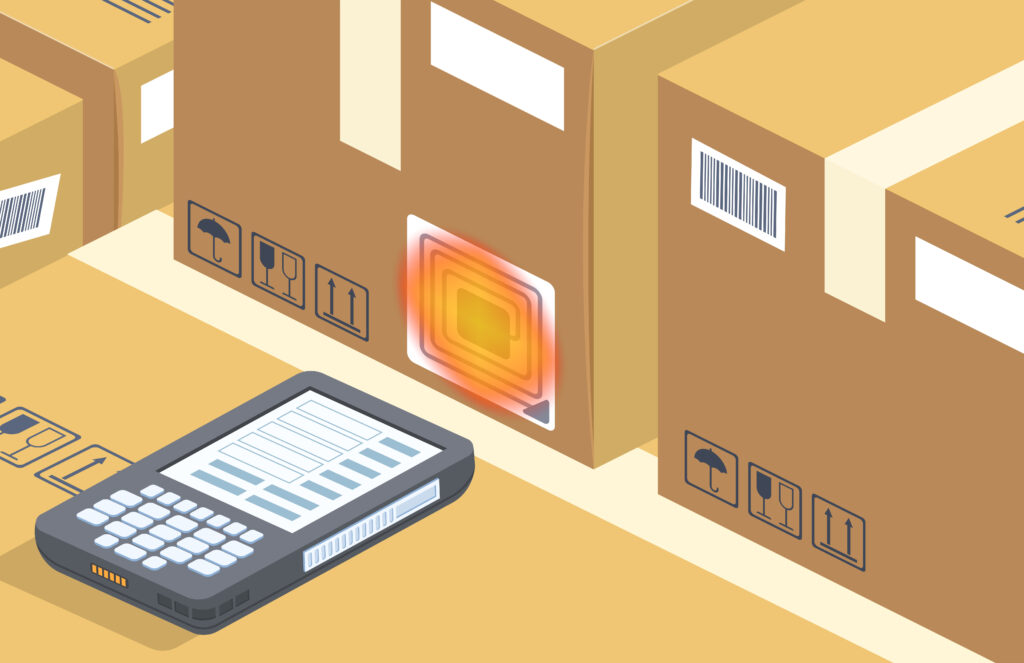Today, warehouses are expected to deliver faster, operate leaner, and adapt quickly to change. At the center of this complexity lies the Warehouse Management System (WMS), a platform that orchestrates everything from inbound receiving to outbound fulfillment. Yet, even the most powerful system can only perform as well as it is tested.
Testing ensures workflows execute correctly, integrations remain stable, and performance holds up under real-world conditions. For decades, manual testing has been the default approach for WMS implementations and upgrades. It provided direct control, hands-on validation, and a sense of reassurance for testers. But the rules of the game have changed. Warehouses are no longer static environments.
They are dynamic ecosystems that demand continuous optimization, frequent configuration changes, and seamless integrations across ERP, robotics, and third-party platforms. Given these conditions, manual testing has a hard time keeping up. It's slow, prone to errors, and getting riskier. This blog explores the risks of manual WMS testing, the real-world scenarios where these risks translate into operational failures, and why enterprises are embracing a new paradigm: automated testing. We will then introduce AuTest, a Blue Yonder Automated Testing Solution designed by Smart IS to eliminate inefficiencies, mitigate risks, and future-proof warehouse operations.
Why Testing is Business-Critical in Blue Yonder WMS
Testing in Blue Yonder WMS isn't just about technical checks; it's a vital part of protecting your business. It makes sure that:
- Orders are picked, packed, and shipped accurately.
- Inventory records align with physical stock.
- Directed work executes correctly on RF devices.
- Integrations with upstream and downstream systems hold firm.
- System performance remains stable during surges in demand.
One missed bug or untested scenario can ruin these results, resulting in lost sales, higher costs, or damaged customer trust. This makes testing crucial, not optional.
However, how testing is conducted, manual vs. automated, determines whether it protects the business effectively or introduces hidden risks.
Also Read: Smart AuTest: Automating WMS Testing Through Robotic Process Automation - Smart IS
The Risks of Manual Testing
- Scalability Challenges
Manual testing requires people to run scripts, validate outcomes, and log results. In small environments, this can be manageable. But in large-scale operations, regression suites may include thousands of test cases spanning inbound, outbound, cycle counting, directed work, replenishment, and more. Running them manually is resource-intensive and slow.
For instance, regression testing after a configuration update could take weeks with manual execution. This slows deployment cycles and inflates project costs. In industries where time-to-market is critical, these delays directly affect competitiveness.
- Human Error in Repetitive Testing
Repetition breeds error. When testers execute the same validation steps across hundreds of workflows, mistakes can creep in, whether from fatigue, oversight, or misinterpretation.
In Blue Yonder WMS, where workflows often involve multi-step sequences like receiving → putaway → picking → packing → shipping, even a minor skipped step can cause false positives or overlooked failures. These errors might go unnoticed until production, where fixing them becomes much more expensive.
- Inflexibility During Frequent Updates
Modern WMS platforms like Blue Yonder release regular updates to support scalability, improve user experience, and enable continuous innovation, and enterprises often customize configurations to fit unique workflows. Every update or customization needs testing to make sure everything works smoothly.
Manual testing cannot keep pace with this rhythm. Testers find it tough to quickly adjust scripts or rerun them across different environments. This leads to incomplete coverage, missed scenarios, or lengthy downtime during upgrades.
- Limited Coverage Across Multiple Interfaces
Blue Yonder WMS operates across three critical layers:
- MOCA: the backend engine running commands and database interactions.
- RF Devices: mobile terminals on the warehouse floor executing directed work.
- Web UI: browser-based interfaces managing workflows and administration.
Testing across these layers manually simultaneously is unmanageable. Often, testers focus on one interface while neglecting others. The lack of holistic coverage means potential integration issues to remain unnoticed until they cause disruptions.
- Inability to Predict Performance Issues
One of the greatest risks of manual testing is its inability to simulate peak conditions. During high-demand periods such as holiday sales, Black Friday, or quarterly inventory reconciliations, WMS performance is pushed to its limits.
Manual testing cannot replicate the stress of hundreds of concurrent users. As a result, performance bottlenecks and scalability issues only surface in production, where they cause costly downtime.
Nightmare Scenarios from Manual Testing
The abstract risks of manual testing can sometimes lead to significant and frustrating business workflows. Think about these common scenarios, which many large warehouse environments experience all too often:
- System Downtime During Peak Season: WMS slows or crashes during high-demand periods, delaying orders and affecting customer satisfaction.
- Order Processing Failures: Missed steps or overlooked workflows lead to mis-shipments and incorrect inventory updates.
- Inaccurate Inventory Records: Manual validation errors cause stockouts, overselling, or inventory discrepancies.
- Custom Workflow Breakdowns: Specialized processes fail due to incomplete testing coverage.
- Performance Bottlenecks: Slow transaction processing under high load reduces worker productivity and throughput.
The Shift to Automation
Enterprises understand that testing needs to grow with the times. Automation provides the opportunity to:
- Run regression suites in hours instead of weeks.
- Eliminate repetitive manual effort and reduce human error.
- Scale testing across thousands of workflows and multiple environments.
- Simulate real-world stress conditions before production.
- Provide consistent, repeatable, and auditable results.
Automation truly changes the game by turning testing from a bottleneck into a powerful business enabler. It shifts testing from being merely a reactive scramble to a proactive safeguard that helps ensure things run smoothly.
This is where AuTest comes in.
AuTest: The Answer to Manual Testing Risks
AuTest, developed by Smart IS, is a purpose-built Blue Yonder Automated Testing Solution designed to replace the inefficiencies of manual testing with intelligent, scalable automation.
Anytime, Anywhere Continuous Testing
With unattended execution and intelligent scheduling, AuTest allows test suites to run continuously across environments. Updates, patches, and integrations can be validated automatically, reducing downtime and accelerating deployments.
Comprehensive Multi-Environment Coverage
AuTest supports automated testing across all Blue Yonder layers:
- MOCA-based commands for backend validation.
- RF-based workflows for mobile operations.
- Web UI-based tests for browser-based transactions.
This ensures complete, end-to-end validation, something manual testing rarely achieves.
Stress and Performance Simulation
AuTest can simulate peak load conditions, running concurrent transactions across users and workflows. Businesses gain insights into system behavior under pressure, allowing them to tune performance before peak demand hits.
Built-In Validation for Accuracy
Unlike manual testing, where humans validate results inconsistently, AuTest embeds validation logic into the framework. Every outcome is checked systematically, ensuring reliable and repeatable results.
Cloud-Based and Secure
As a cloud-based solution, AuTest eliminates complex setup and infrastructure costs. Tests and results are stored securely, accessible from anywhere, and executable with minimal setup using a simple MOCA client connection.
Customizable and Flexible
Recognizing that every warehouse is unique, AuTest allows businesses to customize test cases for their specific workflows, customizations, and integrations. It adapts to the business, rather than forcing the business to adapt to rigid scripts.
Actionable Insights and Reporting
AuTest provides detailed, real-time reports and logs, making it easier for teams to debug quickly, identify root causes, and optimize processes. These insights support both operational efficiency and compliance tracking.
Dashboards for Clear Visibility
AuTest includes intuitive dashboards that give teams a clear, visual overview of their testing activity. With flexible time-based filters, users can track executions across daily, weekly, monthly, or custom ranges. Execution trends are displayed through simple charts that highlight pass and fail rates over time, while real-time metrics keep teams updated on active runs, success rates, and alerts as they happen.
The Real-World Impact of AuTest
Warehouses cannot afford uncertainty when every order, inventory update, and system response has a direct effect on customer satisfaction. Manual testing leaves too many blind spots, often revealing issues only after they disrupt operations. Smart AuTest closes this gap by delivering proactive, automated, and repeatable testing across critical WMS functions. Organizations adopting AuTest have reported significant benefits:
- Accelerated Deployments: Testing cycles that once took weeks are reduced to hours.
- Cost Savings: Fewer manual testers are needed, lowering operational expenses.
- Greater Coverage: Regression and integration scenarios are executed exhaustively across MOCA, RF, and Web UI.
- Higher System Reliability: Early detection of issues prevents costly failures in production.
- Future-Proof Scalability: Automated testing adapts effortlessly as warehouses evolve and expand.
Conclusion: Future-Proofing WMS Testing
Manual testing may have served its purpose in the past, but in today’s environment, it introduces more risk than assurance. The risks of downtime, order errors, inaccurate inventory, and broken workflows are too costly for modern enterprises to ignore.
The shift to automation is no longer optional; it is a strategic imperative. With AuTest, businesses can eliminate inefficiencies, reduce risks, and ensure that their Blue Yonder WMS operates with stability, accuracy, and resilience.
By automating what was once manual, enterprises can transition from reactive firefighting to proactive assurance, safeguarding not just their systems but their entire supply chain performance.
To see how Smart AuTest and our suite of Blue Yonder WMS products can transform your operations, get in touch with our experts today and explore the full range of Smart IS solutions designed to optimize your supply chain.




